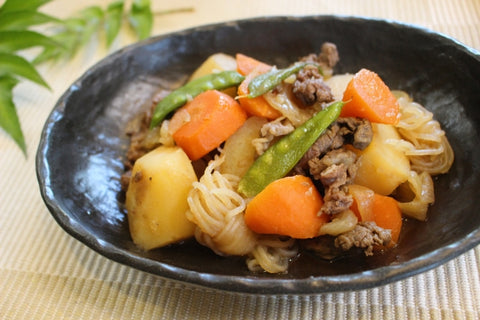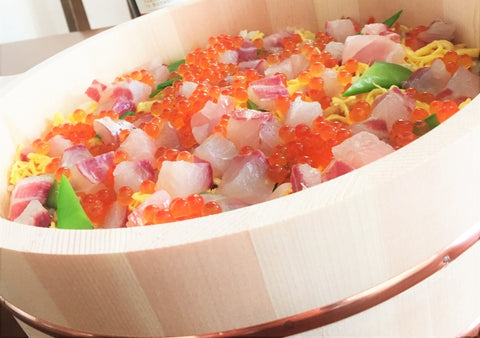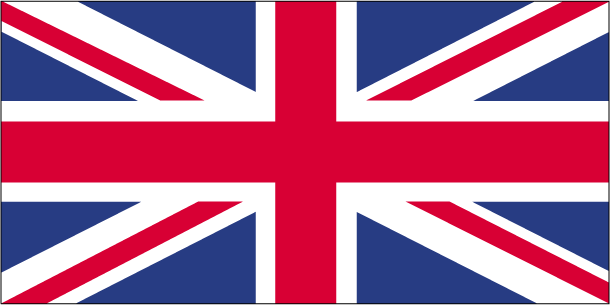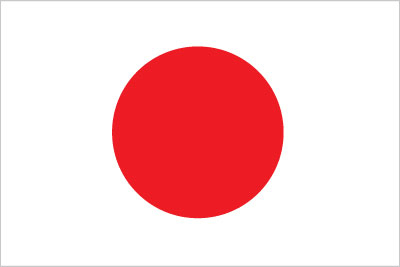
4 Japanese foods that are not well known in Europe but are highly rated
When I live in Europe, my friends and work colleagues sometimes tell me that they want to try Japanese food.
However, what can be troublesome at times like this is when the phrase "If possible, I would like to eat something other than the famous one in Europe" is added.
I wrote this article for those who want to meet such expectations.
4 lesser-known Japanese foods that are highly rated when cooked
Even if you say this, you may not have a very good image of what is famous and what is not known to Japanese people who are used to Japanese food in the first place.
When it comes to Japanese cuisine, sushi is of course famous, but conversely, sushi is too famous, and there are parts of other Japanese cuisine that are not well known.
Therefore, I would appreciate it if you read this article and think, "Speaking of which, this happened."
Oden

When it comes to winter staples in Japan, it's oden.
Just because you can buy oden anywhere in Japan, especially if you go to a convenience store, doesn't mean it's famous in Europe.
If you serve hot oden with a strong taste, you will be very happy.
In Europe, there is no culture of sharing a large plate or hot pot dish among multiple people, so Europeans who see oden for the first time may be confused about how to eat it, but many people like the gentle taste of dashi. It's a taste that can be.
The main ingredients for making oden are your favorite ingredients (carrots, radishes, sausages, etc.), sake, mirin, and dashi stock.
The ingredients are available at European supermarkets, but carrots and sausages can be purchased anywhere.
Although daikon radish is a popular ingredient in oden, it varies by country and region, and it is not always as easy to obtain as it is in Japan.
Sake, mirin, and dashi stock are available at Japanese food stores, so please look for them.
The taste will be less, but you can make it without mirin and sake, so if you can't buy it in your neighborhood or it's expensive, please try it.
Meat and potatoes

Nikujaga is one of the staples of Japanese home cooking.
Nikujaga is said to have originated from British beef stew, but that doesn't mean it's famous in Europe.
The taste is also quite different from beef stew because it uses Japanese seasonings.
Carrots, potatoes, onions, beef, soy sauce, mirin, and sake are often used in nikujaga.
Carrots, potatoes, and onions can of course be bought at supermarkets, but beef is rarely sliced or chopped like it is in Japan, so you will have to cut and use what looks delicious.
Recently, European supermarkets have been selling soy sauce more and more, so there is a high possibility that you can buy it at your local supermarket.
As for mirin and sake, you need to go to a Japanese food store instead of the supermarket in your neighborhood to find them, just like the oden.
Ginger grilled pork

This is also a standard dish in Japan, but it is not well known overseas.
But as expected, meat dishes, everyone jumps.
The ingredients are pork, onion, ginger, mirin, sake, and soy sauce.
Like beef, thinly sliced pork isn't sold very often, so it might be delicious if you cut it yourself or try making it with a thicker piece of meat on the bone.
Onions can of course be bought at supermarkets, but ginger is often not available, so if you don't have it in the vegetable section, go to the spice section and you will often find powdered ginger, so look for that as well. Try it.
Mirin and sake must be purchased at a Japanese food store, and soy sauce is often available at your local supermarket, so please look for it.
chirashi sushi

Isn't this sushi? You might think so, but it's not as well-known as regular sushi, so I'll introduce it here.
Chirashizushi is a dish with a high degree of freedom as long as you prepare the base sushi rice and eggs, so you can add ingredients that your partner likes.
The basics are rice, sushi vinegar, eggs, seaweed, and any other ingredients you like.
As for rice, it is difficult to buy Japanese rice at supermarkets, but rice for risotto is easily available, so if you don't mind buying rice for risotto at a supermarket, if you like Japanese rice, buy it at a Japanese food store.
Even if vinegar is sold at supermarkets, sushi vinegar is basically not available. Uka
Of course, you can also buy shinoko at Japanese food stores.

You can buy eggs at supermarkets, but seaweed is sometimes sold at supermarkets, so if you can't find a supermarket, buy it at a Japanese food store.
You can basically choose the other ingredients as you like, but shiitake mushrooms and shrimp are often included.
Supermarkets sell mushrooms, but they rarely sell shiitake mushrooms, so try looking for Japanese food stores.
Some supermarkets sell frozen shrimp, so if you have them, you can buy them.
However, from my experience, European frozen shrimp often smell so bad that even if you put them in sake, you can't get rid of the smell, so please be careful about that.
There are many other things such as salmon and cucumbers, so please try to find them yourself.
summary
These are the 4 Japanese foods that are not well known to Europeans but are highly rated.
What do you think?
If you look at it this way, mirin and sake are needed quite often when making Japanese food, so it might be better to buy them for the time being.
Online shops are very convenient for those who don't have a Japanese grocery store in their neighborhood, or who have a poor selection of products.
Our Germany-based online shop carries mirin, sake, and various Japanese food ingredients ranging from table size to commercial use, so please take a look.



